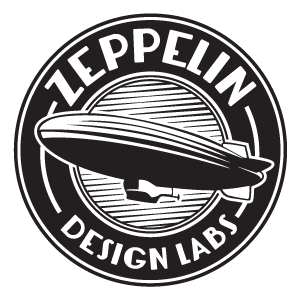Home › Forums › Quaverato Forum › Quaverato User Reviews › Quaverato + Midi build notes.
- This topic has 1 reply, 1 voice, and was last updated 3 years, 11 months ago by
A.Nagy.
-
AuthorPosts
-
A.Nagy
ParticipantA.Nagy
ParticipantHi folks
I live in Switzerland and ordered my Quaverato kit directly from Zeppelin Design USA. It was shipped immediately. Sadly, USPS is about the worst possibility for shippings to Europe. It took 24 days in total, with a blackout in tracking after arrival on the continent. USPS hands packages over to domestic carriers, Swiss Post in my case. I paid CHF54 (half of the kit costs), which is mostly a handling-fee + 8% VAT. In contrast, DHL does not charge any handling- or entry fee and only collects the VAT for shipments this small, they also have a medium runtime of 3-5 days with their standard service, even during pandemic times.
The kit arrived in a small but robust packaging, which is perfect as it doesn’t waste any space. The main parts where in small bags inside the enclosure, wrapped in plastic foil and padded with thin foam. All documents are easily found on this website.
After reading through these forums, I really like to say this:
*Invest in a heat-controlled, small-medium soldering iron!*
You don’t need a full blown soldering station. There are plenty cheap soldering irons that have a pot on the grip to set the working temp. Depending on your solder, 360-380°C (680-720°F) is enough, more will easily result in these burnt-out patches that are all around the troubleshooting forum. While at it, buy some solder wick and a small tube of flux.With the right tools, the built is really easy. The assembly manual not only stays true to Zeppelin’s promise to be the best in the industry, it also gives a lot of knowledge about the parts and workings. You can actually learn more than only building this specific kit. That’s great!
The BOM not only lists the parts but also shows them pictured, which can be helpful to the more unexperienced builder. With good care to detail and measuring of the parts before soldering, it took me a little over two hours to assemble the board. The heatshrink tubbing that came with the kit was mangled on one side, so I had to improvise in building the optocouplers. But this is only a minor issue, as the OC assembly only needs to stay in place an be sealed from light. (This could be solved in many different ways, even with black electronics tape or a hot glue gun and black paint. Be creative if you run into issues.)
Everything else was straight forward. Make sure to ground yourself when handling parts sensitive to static currents like ICs or transistors and it should go fine. Also, make sure to check for the right polarity of parts when mentioned in the manual, especially with diodes, LEDs, transistors and elcos. De- and desoldering ain’t rarely joyful. If in doubt with LEDs, check with a small battery cell for the polarity or measure the parts to be really sure.
My pedal, including Midi worked right away, I only have a little issue with calibration of the HPF. The total build time, including measuring continuity and voltages prior to trying it out was about 3.5 hours for me.
With a very enjoyable and positive build experience, there are still a few things that could be improved. Here’s my take on them:
– The insulating paper that goes under the pots is quite flimsy and moves around. An insulator with adhesive on one side or even small adhesive pads for the backside of each pot would be an improvement.
– The pots have very short axles and no groves, knobs are not the best quality (sloppy painted markings, weak material for the grub screws,…). Personally, I’d pay $10 more if the quality of these would be improved.
– The solder jumpers for HPF/LPF seem to be a hurdle for many that come to the forums for help. As there is enough space left, these could be replaced by two two-pin ISP with a jumper for example. Bonus: a solder-less recalibration would be possible.
– Assuming that quite some builder will have to take apart the pedal for measuring and resoldering during the building phase, the switches could also be mounted using a removable connection. Which I did using jumper cables for breadboarding, cut in half soldered to PCB and switches, the connection can be cut when needed.
– Ultimately, having the dip switches for crossover frequencies and the set screws for the VR8/VR9 on the back or front of the case would be pure luxury. Think Chase Bliss pedals or the EQ on the Origin Effects Revival Drive. But this might be a mod for later.In a nutshell – thanks to a fantastic assembly manual, this is an quite easy build that most enthusiasts should complete without issues, if they actually read the manual and have mastered basic soldering. It definitely looks more complex than it actually is.
-
AuthorPosts


